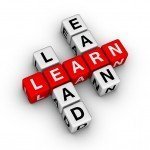Objectives
Explore the foundations, strengths, weaknesses and recovery goals of the following theories of addiction:
Moral
Spiritual
Disease
Genetic
Drive
Public Health
Moral Model
Foundation
Addiction is a choice made by individuals with low moral standards.
Addicts are characterized as inherently bad people who do bad things
Strengths
May aid in some prevention efforts
Drawbacks
It may increase depression and self loathing
It does not provide any real solutions
Recovery Goals
Develop a stronger moral compass
Through willpower, make better choices
Spiritual Model
Foundation
Disconnection from God or a Higher Power causes addiction. This separation causes anxiety, loneliness and alienation.
Strengths
Works with the 12-Step philosophy which encourages turning one’s will over to his higher power.
Drawbacks
Very little empirical evidence
There is a large percentage of people for whom this is not an option
Recovery Goals
Recovery consists of establishing or re-establishing a connection with God or a Higher Power.
Through this connection finding a “road map” for life which brings peace and contentment
Medical Models: Disease Model
Addiction is a consequence of physiological changes that addictions may cause
These physiological alterations cause cravings to take more drugs
Users cannot be held accountable for their addictions and are “powerless” over them.
http://www.asam.org/quality-practice/definition-of-addiction
Drawbacks
Takes responsibility away from addicts
Viewing addicts as victims creates a sense of learned helplessness.
If addicts come to believe that there is no cure for addiction, they may believe that sobriety is impossible.
Recovery Goals
Develop a new way of living which protects them
Medical Models: Genetics/Inheritance Model
Genetic factors account for about half of the likelihood that an individual will develop addiction. http://www.asam.org/quality-practice/definition-of-addiction
Strengths
In twin studies and adoption studies, there has been some evidence for genetic predisposition
Drawbacks
The exact genes or genetic causes have not been identified
A predisposition does not mean someone will develop an addiction
Recovery Goals
Understanding why a particular addiction is “rewarding”
Avoiding exposure to things that could “trigger” the onset of an addiction
Medical: Drive Theories
Foundation: Addiction involves the development of powerful drives underpinned by homeostatic mechanisms.
Strengths
Withdrawal/Craving
Many urges and cravings have characteristics similar to naturally occurring drives (i.e. sleep, eat)
Drawbacks
Not all addictions follow a pattern suggestive of a need for homeostasis
Even addictions that suggest a homeostatic drive mechanism also show evidence of other important influences
Recovery Goals
Identify and find alternative ways to create homeostasis
Public Health
Foundation: Three-prong approach to prevention and intervention: “Agent-Host-Environment.”
Threats to public health require: a susceptible host (e.g., a person), an infectious agent, a supportive environment
Strengths
There is no doubt that an interplay between the individual, the environment and the reward from the behavior lead to addiction
Interventions in any ONE of these three “prongs” will help prevent or intervene in addiction
Drawbacks
We still don’t know what characterizes the host, agent or environment
Recovery Goals
Prevent further harm caused by the addictive behavior
Develop a supportive recovery environment
Eliminate whatever made the host susceptible
Eliminate the infectious agent or develop an immunity to it.
Summary
The moral model
One of the earliest conceptualizations of addiction.
Provides a unifaceted explanation for behavior
Medical and disease
Takes the responsibility off of the person with addiction who has these biological or genetic weaknesses
In lieu of understanding the function of the behavior, it encourages avoiding it all together
Public Health Model
Begins to look at the issue as a more complex one
Has failed to identify with any reliability and validity what factors in the host and/or environment actually contribute to addiction.
 Learn more by attending one of our upcoming webinars on the models and theories of addiction
Learn more by attending one of our upcoming webinars on the models and theories of addiction
- 3/1/2016 Models and Theories of Co-Occurring Disorders: Moral, Medical (1 Contact Hour) BUY NOW
- 3/2/2016 Models and Theories of Co-Occurring Disorders (3 Contact Hours) BUY NOW
- 3/3/2016 Models and Theories of Co-Occurring Disorders: Behavioral, Developmental, Learning (1 Contact Hour) BUY NOW
- 3/8/2016 Social-Ecological Model (1 Contact Hour) BUY NOW
Or by taking the on-demand class: Theories of Addiction and Co-Occurring Disorders (4 Hours)

